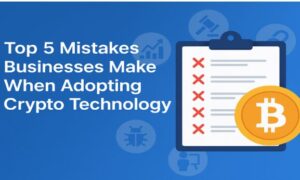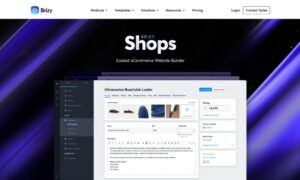Managing expenses effectively is critical for any business aiming for growth and sustainability. From small startups to large corporations, the need for streamlined expense management solutions has become a cornerstone of modern financial operations. Whether it’s tracking travel expenses, reimbursing employees, or keeping an eye on operational costs, a robust expense management system can save businesses time, money, and unnecessary stress.
What Is Expense Management?
Expense management refers to the process of monitoring, controlling, and reporting business costs. This includes managing employee-initiated expenses, like travel and meal reimbursements, as well as operational costs such as utility bills or supplier payments. Traditional methods, like spreadsheets or manual reporting, are often time-consuming and prone to human error. Modern expense management solutions, however, leverage technology to automate and simplify these processes.
Why Businesses Need Streamlined Expense Management
Efficient expense management isn’t just about controlling costs it’s also about ensuring transparency, compliance, and better decision-making. Businesses that fail to adopt streamlined expense solutions often face challenges like:
Inefficiency: Manual processes consume time that could be better spent on strategic activities.
Errors and Fraud: Without proper checks, duplicate entries or fraudulent claims can slip through.
Poor Financial Insights: Disorganized records make it difficult to analyze spending patterns and optimize budgets.
Features of Modern Expense Management Solutions
Modern expense management tools are designed to address these pain points. Here are some key features:
- Automation: Tools like AI-powered receipt scanning and automated workflows simplify the process of submitting and approving expenses.
- Real-Time Tracking: Employees and managers can monitor expenses as they occur, reducing delays in reporting and reimbursements.
- Mobile Accessibility: Mobile apps allow users to upload receipts, track expenses, and get approvals on the go.
- Integration: Many solutions integrate seamlessly with accounting software, making it easier to sync data and generate financial reports.
- Policy Enforcement: Built-in compliance features ensure that employees adhere to company policies, reducing out-of-policy claims.
Top Expense Management Solutions
Several platforms cater to businesses of all sizes, each offering unique benefits. Here are a few popular solutions:
- Expensify: Ideal for small to medium-sized businesses, Expensify simplifies expense tracking with features like receipt scanning and automatic expense categorization.
- Concur: Suited for larger organizations, Concur offers advanced tools for travel and expense management with global capabilities.Zoho Expense: Affordable and user-friendly, Zoho Expense provides features like multi-currency support and integration with other Zoho apps.
- Brex: Designed for startups, Brex offers real-time expense tracking and built-in corporate card integration.
Benefits of Adopting Expense Management Solutions
Implementing an expense management system can revolutionize how a business handles its finances. Here’s how:
- Time Savings: Automation reduces manual effort, allowing employees to focus on core responsibilities.
- Cost Control: By providing clear visibility into spending patterns, businesses can identify unnecessary expenses and cut costs.
- Improved Compliance: Expense policies are enforced automatically, reducing violations and ensuring adherence to tax regulations.
- Enhanced Employee Experience: Simplified processes mean employees get reimbursed faster, boosting morale.
- Data-Driven Insights: Detailed analytics enable businesses to make informed financial decisions and forecast budgets effectively.
How to Choose the Right Expense Management Solution
With so many options available, selecting the right tool can feel overwhelming. Here are a few factors to consider:
- Business Size: Ensure the platform can scale with your business needs.
- Ease of Use: The interface should be intuitive, ensuring quick adoption by employees.
- Integration: Check if the tool integrates with your existing accounting or HR systems.
- Customization: Look for features that allow you to tailor the platform to your company’s policies.
- Cost: Balance your budget with the features offered, and consider any hidden fees.
Common Challenges in Implementing Expense Management Solutions
While these tools offer significant advantages, businesses may encounter challenges during implementation:
- Employee Resistance: Some employees may resist change, especially if they’re comfortable with traditional methods.
- Upfront Costs: While these systems save money in the long run, the initial investment can be a barrier for smaller businesses.
- Integration Issues: Some tools may not integrate seamlessly with existing software, requiring extra setup time and effort.
Overcoming Implementation Challenges
To ensure a smooth transition, businesses can take the following steps:
- Training: Provide comprehensive training sessions for employees to familiarize them with the new system.
- Start Small: Implement the solution in phases, starting with a single department or team.
- Feedback Loop: Gather feedback from users to identify and address any issues early.
- Choose the Right Vendor: Partner with a provider that offers strong customer support and implementation guidance.
The Future of Expense Management
As technology continues to evolve, expense management solutions are becoming more advanced. AI and machine learning are driving innovation, enabling features like predictive analytics and fraud detection. Blockchain technology is also making its way into this space, offering secure and transparent transaction tracking.
In the near future, we can expect even more intuitive tools that integrate seamlessly into broader financial ecosystems. These solutions will empower businesses to manage expenses with unprecedented efficiency and precision.
Conclusion
Adopting streamlined expense management solutions is no longer a luxury it’s a necessity. These tools not only save time and money but also enhance transparency and decision-making. By choosing the right solution and implementing it effectively, businesses can transform their expense management processes and pave the way for sustainable growth.



































